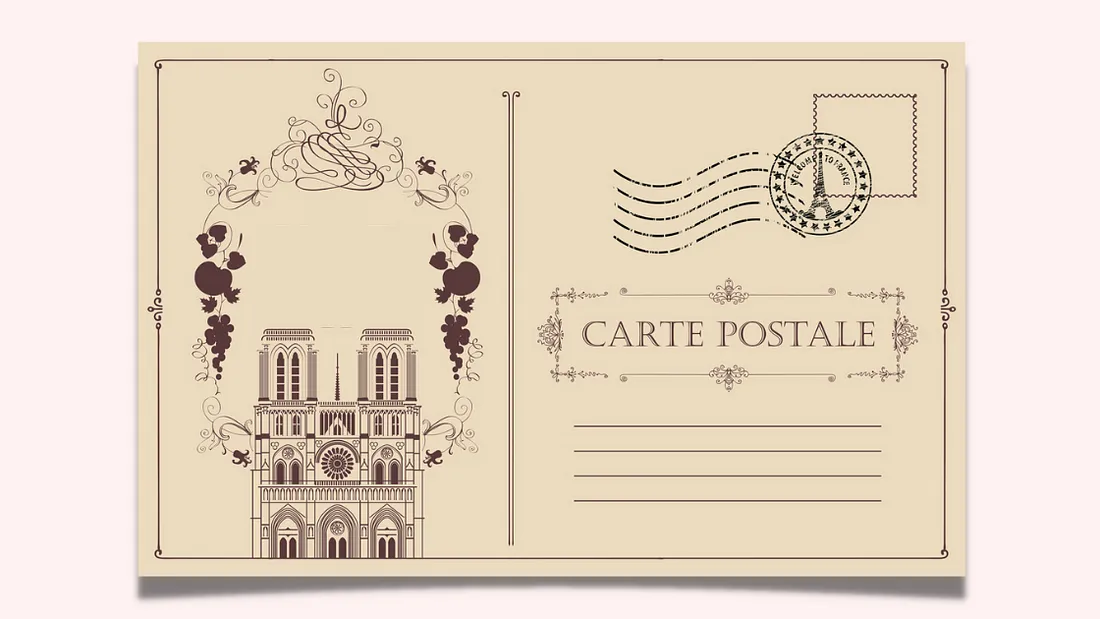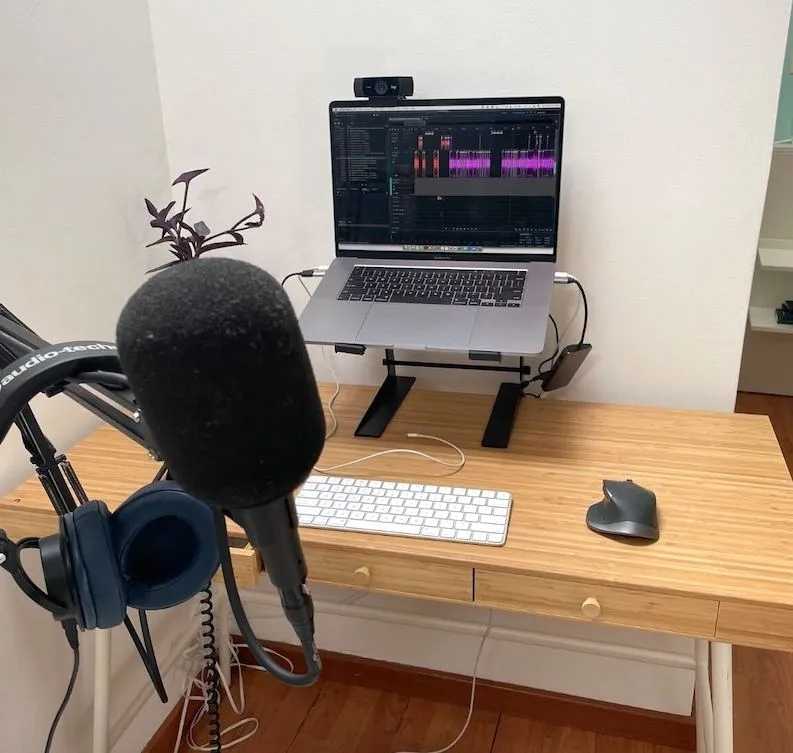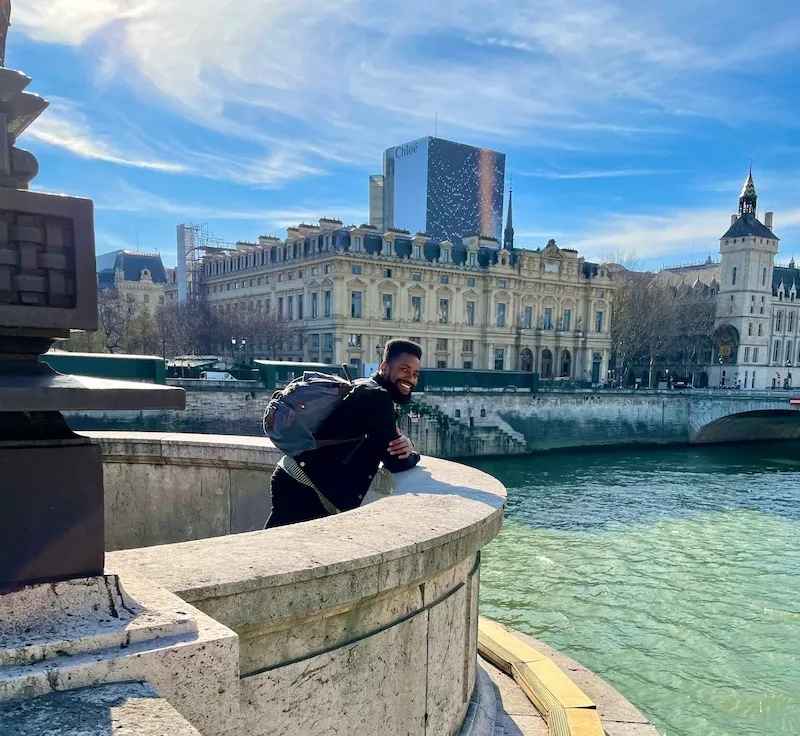3 Ways Moving Abroad Made Me a Better Sound Designer

We’ve all heard the popular saying, “a picture is worth 1000 words.” What is an audio clip worth though?
Take a minute and listen to this clip.
What did you perceive in your mind?
You hear someone singing in a beautiful language that you don’t (maybe you do) understand. You hear people in the background talking in an echoey space. Did you ask yourself basic questions like:
“Where is this?”
“Who is singing?”
“Is this a concert or a street performance?”
These are the kind of questions I ask myself when I start working on a project. How can I combine, record, manipulate, and adjust individual sound elements to create an accurate scene or tell a narrative story?This process completely changes and expands when you involve travel.
Did you arrive at a conclusion at the end of this audio clip? You may have said “an outdoor concert” or “street performer in a city.”
At the time this was recorded, I didn’t know that this simple, yet beautiful audio clip would become the starting point for my journey. This is an account of how my tour of Europe changed how I approach sound design and impacted the rest of my life.
You don’t have to overdo it
Let’s step back to the audio clip you listened to. Based on everything I’ve written so far, it may be clear to you where the scene is taking place. I thought it was painfully obvious. That was until I sent this recording to some friends who didn’t know I was out of the country. I sent “omg check this out” and didn’t explain it because it was obvious, right!?
The responses are as follows:
Friend 1: WOW where in Toronto is this?
Friend 2: eyy you finally go to europe
Friend 3: beautiful! Montreal?
Friend 4: Didn’t play lmao
Okay, I didn’t need to include friend four but I thought it may spice things up. All these responses equally irritated me. Why was I getting Toronto, Montreal, and GENERAL Europe? It’s clearly in Paris in front of Notre Dame. Why didn’t anyone understand that? Obvious, right?
I shared it with more friends, ones that knew I was in Paris. Their response was more or less similar to my second friend’s. I even went as far as to share it with random people at a bar, which may have been the least intelligent decision that anyone on this blog has ever made. Their responses aren’t even worth writing about.
I now realize why my friends didn’t know and why you didn’t either (but if you did — gold star!). Unbeknownst to me at the time, nothing in this 1 min 16-sec audio clip gives ANY details about Paris besides it being in French. Even so, the singer says, “Thank You” at the end, which doesn’t necessarily scream Paris in front of a famous cathedral. EVEN THEN, you may not even be able to tell it’s French.
As a sound designer, I was a bit embarrassed, after all, it is my job to create audio scenes and I just assumed my friends knew exactly where this vague (but stunning) audio clip was recorded.
After my embarrassment subsided, I tried to figure out things that would have made it sound more like Paris.” Maybe it needed a siren in the background, that’s Paris! I could also do… umm…” This is the point where my thoughts of, “how to make this audio more Paris,” stopped. I felt like there wouldn’t be anything that could be added to this audio that would make it feel like Paris without taking away from the beauty of this clip. The only thing I could say was “Hey check out this song, I heard someone perform in front of Notre Dame.”
The correlation to my sound design work was a simple one. If this audio was being used in a podcast, a simple “I was standing in Paris in front of the Notre Dame” and you’d instantly know where you are with the audio used above. We may think that the use of narrative writing to help describe a soundscape might come across as “lazy sound design” but this is not always the case. Sometimes a little extra context, from a host or guest, allows the sounds in the scene to shine without creating overly complex sound design. This theory goes hand and hand with my next point.
No two sounds are alike
It was late evening in Lisbon and I was working on a sound design mix in my apartment. It was the middle of April and for the fifth day in a row, it was pouring rain. Lisbon is a city known for heat and sunshine, but I came to realize that I was there during an unusual weather period; it rained nearly daily for two months. A lot of my time in Lisbon, to that point, was just rain. I was sick and tired of the rain. I tuned it out like it was background noise. This makes it all the more ironic because it became one of my best sound discoveries.
I was working on a podcast mix that I thought could use some rain sound. I decided I’d just grab my audio recorder, go outside under the roof and start recording the rain for use in the episode. When I came back inside and pulled the recording into my audio DAW, I was shocked to hear that it didn’t sound like rain at all.
My first thought was something may have been wrong with my recorder because it sounded incredibly weird. I took off my headphones and realized it wasn’t my recorder, it was actually what the rain sounded like from outside my apartment. I sat there puzzled, not being able to wrap my mind around the fact that this rain that I’d been hearing for days on end was NOTHING like what I ever heard in my 25 years of life. Why have I never noticed this before?
After thinking about it, the reason was simple. I never paid any attention to it. It was there and nothing special. It was raining. However, there was something incredibly special because it turns out the roofing and shape of the building made the water bounce in a way that made it a distinctive sound effect.
This concept of the rain in my apartment in Lisbon, sounding completely different from any other rain I’d heard, changed a rigid concept in my mind — just because a sound exists everywhere doesn’t mean it’s going to sound the same anywhere.
Now when I do sound design, I always try to do some quick audio research on the location, period, and, culture and implement it as best as possible without it being jarring to the listener. It’s not a deep concept but it allows me to create a sound design that is accurate and true to the story being told. This is a concept that is very important to the work I do.
No studio, no problem… sorta
Before the audio nerds raise their pitchforks and get mad at me for speaking out of turn, allow me to explain.
I do all of my sound mixes wearing headphones because this is primarily how people listen to podcasts. This eliminates the need for studio monitors in this specific situation.
When it comes to recording, I was able to bring the following in one small bag:
- MacBook Pro, Stand, and Keyboard
- Shure SM58 Microphone & XLR Cable
- Microphone Stand
- Focusrite Audio Interface
- Zoom H5 recorder
With these six items, I was able to do all my sound design work effectively. I was able to do everything from mixing audio to recording a voice-over with ease. My favourite part of this experience was being able to take my audio recorder with me on a weekend trip and record local ambience and sounds. Having authentic audio from cities like Lisbon, London, Paris, and Barcelona is something that not only makes me happy as an audio nerd/sound designer but hopefully redeems me from any possible backlash for saying “No Studio, No Problem.”
To appease audio nerds, there was one issue with my working abroad setup. Not having a second monitor was a problem at times. I’d often need to look at scripts while mixing and this became much more complicated while having two mixing windows open. This led to me being extra meticulous when it comes to the edits and mixes I created for clients.
I do need to be honest and say I still, to this day, only use my laptop to do all my mixing with no external monitor. After months of working this way, I got used to this setup and found I’m more diligent when it comes to notes and mix revisions. I also found it useful to mix anywhere. I currently work at home in Montreal with regular internet speed. If something happened and I couldn’t work on a mix, I’d have no problem taking my equipment and working elsewhere.

I call this my capsule setup; having it makes me feel much more comfortable and versatile as a creative professional.
I’d be lying if I said that “not having a second monitor” was the last issue when it came to working while traveling a.k.a the “Digital Nomad” lifestyle but there were a few more…
The bad….
Time zones suck
On the Pacific Content team, we work with people across various time zones but the core team is primarily based in Eastern and Pacific Standard Time. Before heading overseas, I was based in Toronto, which is in the Eastern Time Zone. The agreement was that I’d continue working in Eastern Time regardless of where I was based. This was no problem to me; it was almost preferred. My thought was I’d have my mornings to myself, start work early afternoon, and finish in the evening. Once done, I’d still have time to do things at night. The best part for me was that I’d be able to work ahead in the mornings if I wanted more time on projects. I was excited. But things didn’t always go exactly how I planned.
I was primarily based in Lisbon while I was working abroad. The beautiful capital city of Portugal with big hills, good weather*, and great people fell in Western European Time, while I was there. This meant that I had a general working schedule of 2 PM to 10 PM in Lisbon which equates to 9 AM to 5 PM in Toronto. Generally, this was amazing, but issues sometimes could occur if I wanted to work a bit later on a project or nearly missed a meeting because my calendar didn’t update to the right time zone. These are smaller issues that I found fixes for over time. My time zone even proved as a benefit, at times, when it came to doing technical setups for interview recordings. Looking back on it, this issue was nothing compared to the ones I faced next.
The day-to-day of life
To be honest with you, I thought about not including this final point in this piece but I felt it would be disingenuous to not mention some aspects of my more personal struggles. If this aspect isn’t of interest to you, feel free to skip the “Final Thoughts”. I won’t be mad 😉
Although living/working abroad and taking weekend trips to Paris, SEEMS like a fun lifestyle, it wasn’t all sunshine, rainbows, and singers in front of famous Cathedrals. It was hard at times.
I’d meet amazing people, experience great cultures, and see some of the world’s greatest wonders but the constant changes slowly started to wear away at me. It was sometimes hard to make friends and the ones I did meet wouldn’t be around for too long (a struggle I’ve never experienced being an overly social person). Dating was hard because who would realistically date someone who isn’t living in their country permanently? Small but random things like continually blowing electrical fuses due to electronic voltage issues up to bigger things like, why my microphone was clicking (which I fixed), were grinding away over time. Worst of all, having to leave great people became harder every time and I began to miss family and friends at home. Sometimes I felt quite alone.
Although this didn’t affect my work or career, I’d be lying if I said there weren’t some days that were harder than others. There was one period in particular when I spent nearly a month by myself. I was working, and exploring the city in my free time but I was incredibly unhappy and felt alone. It was to the point where even my family and friends back home started to notice that I may not be the happiest. I thought about returning to Canada many times but decided to stay which was ultimately a great decision.
Don’t get me wrong, the positive things I’ve learned from this experience were beautiful memories that I’ll cherish for the rest of my life. The hard times helped me grow and taught me a lot about myself in the process. Sure, I grew as a sound designer but honestly, that is just part of the equation.
Getting to reunite with old friends I haven’t seen in years, making new ones, and seeing the generosity and beauty in the world still bring tears to my eyes. These are invaluable times I would NEVER change but it was important for me to be honest about the realities.
Final Thoughts
I returned to Toronto, Canada on July 29th of this year after spending just over five months abroad. It was a feeling that is still hard to describe. It felt like a chapter had ended and I returned home as a different person but the city I called home wasn’t the same. I moved to Montreal shortly after — a city that I’d fallen in love with. It gives me elements of what I miss in Europe and what I cherish about North America. Although my love for travel is still the same, my interest in working abroad, for months on end, has since gone away. I’ve met many people who were able to maintain this lifestyle and although I still created amazing work while travelling, the mental toll of constant change and sometimes loneliness is not worth it to me. I still love to travel and I’ll continue to do so but just in different ways that don’t involve me carrying a laptop and a microphone.
The things I’ve experienced and learned on both a personal and professional level are unparalleled by anything I’ve ever done in life. Not only did I grow as a sound designer but also as a person which is arguably more important.
Through my reflections on my journey with travel and sound design, I came to one big conclusion that doesn’t require you to book a plane ticket and blow fuses.
Paris is a great city.
OK… that was a bad joke… no idea if I can keep that in but I’ll try.
In all seriousness, success and growth in your creative career (whether that be sound design or not) do not exclude the life around you. How we create and consume content has everything to do with our surroundings, background, race, religion, gender, sexuality, etc. It doesn’t matter if you’re working from a studio, an office in your hometown, or working abroad planning your next weekend getaway, every aspect of our daily lives in some way shapes the things we make.

Sign up for the Pacific Content Newsletter: audio strategy, analysis, and insight in your inbox.
